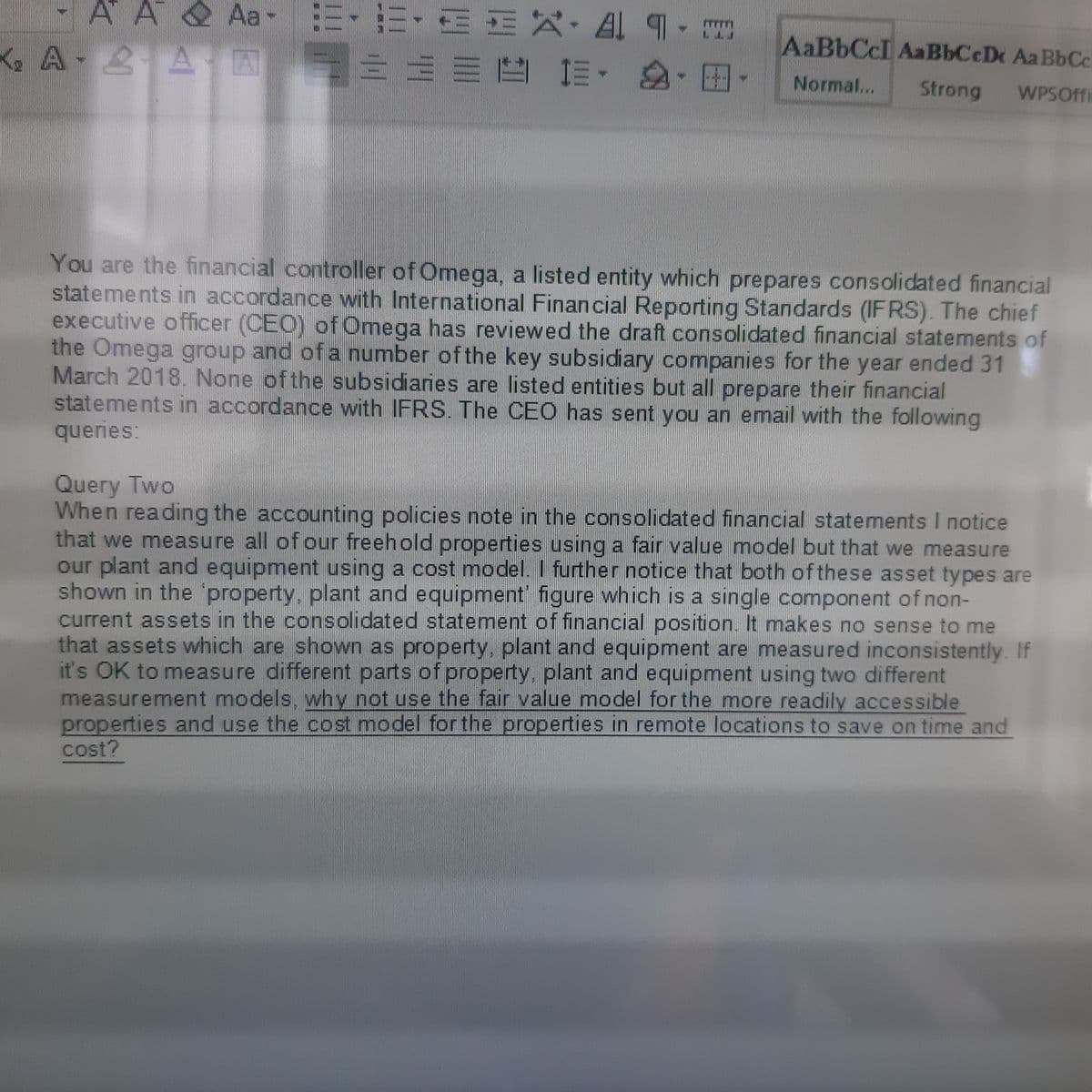measurement models, why not use the fair value model for the more readily accessible properties and use the cost model for the properties in remote locations to save on time and cost?
measurement models, why not use the fair value model for the more readily accessible properties and use the cost model for the properties in remote locations to save on time and cost?
Chapter3: Analyzing And Recording Transactions
Section: Chapter Questions
Problem 1EB: Match the correct term with its definition. A. Financial Accounting Standards Board FASB) i. used by...
Related questions
Question

Transcribed Image Text:-A A & Aa-
=,三,面 X, A 9.
AaBbCcI AaBbCcDx AaBbCc
A 2A A
1三。
4.
Normal...
Strong
WPSOffi
You are the financial controller of Omega, a listed entity which prepares consolidated financial
statements in accordance with International Financial Reporting Standards (IFRS). The chief
executive officer (CEO) ofOmega has reviewed the draft consolidated financial statements of
the Omega group and of a number ofthe key subsidiary companies for the year ended 31
March 2018. None of the subsidiaries are listed entities but all prepare their financial
statements in accordance with IFRS. The CEO has sent you an email with the following
queries:
Query Two
When reading the accounting policies note in the consolidated financial statements I notice
that we measure all of our freehold properties using a fair value model but that we measure
our plant and equipment using a cost model. I further notice that both of these asset types are
shown in the 'property, plant and equipment' figure which is a single component of non-
current assets in the consolidated statement of financial position. It makes no sense to me
that assets which are shown as property, plant and equipment are measured inconsistently. If
it's OK to measure different parts of property, plant and equipment using two different
measurement models, why not use the fair value model for the more readily accessible
properties and use the cost model for the properties in remote locations to save on time and
cost?
Expert Solution
This question has been solved!
Explore an expertly crafted, step-by-step solution for a thorough understanding of key concepts.
Step by step
Solved in 3 steps

Knowledge Booster
Learn more about
Need a deep-dive on the concept behind this application? Look no further. Learn more about this topic, accounting and related others by exploring similar questions and additional content below.Recommended textbooks for you

Principles of Accounting Volume 1
Accounting
ISBN:
9781947172685
Author:
OpenStax
Publisher:
OpenStax College

Cornerstones of Financial Accounting
Accounting
ISBN:
9781337690881
Author:
Jay Rich, Jeff Jones
Publisher:
Cengage Learning

Principles of Accounting Volume 1
Accounting
ISBN:
9781947172685
Author:
OpenStax
Publisher:
OpenStax College

Cornerstones of Financial Accounting
Accounting
ISBN:
9781337690881
Author:
Jay Rich, Jeff Jones
Publisher:
Cengage Learning